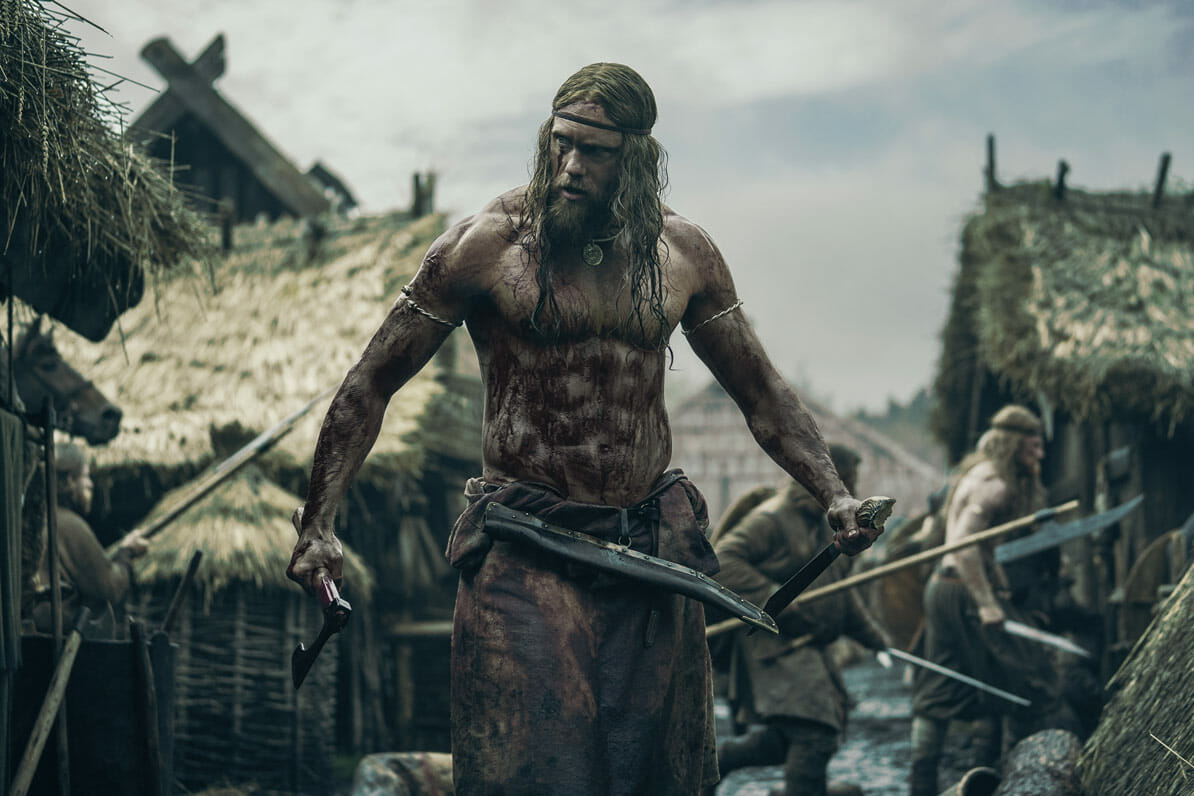The films of Robert Eggers are junctures of myth and reality, each in its own way. The Witch is a slow-burn reveal that its myth is real, and The Lighthouse cavorts in the mystery between myth and madness; The Northman, on the other hand, is a full fusion of myth and reality, a no-holds-barred Viking epic in which Norse mythology is ontic truth and every act of violence carries mystical weight. In other words, it’s buying what its setting is selling. It’s the fantasy that history thought itself to be.
READ ALSO: Check out all the movie reviews by Ryan Bordow
With the supernatural a fact of life rather than an ever-present question, The Northman—based on the Scandinavian legend Vita Amlethi, an early inspiration for Hamlet—is more scrutable than Eggers’ past work. Beyond some tasteful ambiguity in the details, there’s scarcely a need to wonder what’s real: by the time Amleth swears to avenge his father, save his mother, and kill his uncle, it’s clear that spirits and gods alike are guiding his quest. The Northman inspires wonder not in the head but in the chest. The thunder of guttural shouts and pounding drums, the hungry rage of heaven-sanctioned violence—it’s a sensorial plunge into cold water and hot blood.
And an immersive one, thanks to the crew’s obsessive attention to detail. Eggers reteams with cinematographer Jarin Blaschke, production designer Craig Lathrop, and costume designer Linda Muir—all of whom worked on The Witch and The Lighthouse—to restore the legend in all its gruesome glory. Its world is intoxicatingly tangible. Shot on location in Iceland and Ireland, The Northman captures the scope of a people who saw war in the heavens as hope. From stunning vistas to bleak, period-accurate sets to filthy costumes trudging through the sludge, the film chisels out a world where violence feels as inevitable as faith.
Eggers’ script—co-written with Icelandic poet Sjón, who wrote last year’s Lamb—is just as meticulous. Viking lore and titles are up to code, and the characters embody Norse dispositions with conviction. The same goes for the cast. Skarsgård is a chameleonic animal: whether he’s fighting with wolfish ferocity or hiding meekly in sheep’s clothing, he encapsulates the bond between man and nature that the Vikings found so compelling. Hawke, Bang, and Kidman are excellent in equal measure, each taking an ancient caricature to its theatrical peak, and Dafoe, of course, is strangeness incarnate, relishing the opportunity to play a jester and a priest in one weird go.
Taylor-Joy plays love interest Olga with fervor, but the character is emblematic of the film’s narrative shortcomings. The Northman depicts patriarchal attitudes as they were, so its female characters must find strength through subversion from places of powerlessness. That’s all well and “realistic,” ostensibly. But in bringing Norse religion to life, the film gets a little too comfortable with women’s place in its teleology. Up through the final scene, The Northman prescribes Olga the most rote, conventionally gendered fates imaginable, and it does so with pomp and ceremony. Her character is a deviation from the original legend, so her story didn’t need to unfold this way. It’s a minor failure of imagination—more a limitation of perspective.
And The Northman proves capable of a wider perspective. In one small but trenchant moment, after Amleth helps ransack a village, the camera detaches from him and follows a young, nameless boy as he stumbles through the destruction, echoing Amleth’s shock at losing his family and home. The film peeks over its entrenched Viking perspective to scrutinize their violence—an avenger sowing seeds of revenge in a horrible, bloody cycle that no creed nor context could justify. Most of the film isn’t so judicious. It’s undeniably artful, but its conservative narrative takes the macho revenge tale exactly where you’d expect it to go. Still, few movies this thoughtful climax in nude Vikings battling to the death on an active volcano, so there’s plenty here to love.
★★★½ (3.5/5)




